Tire pressure is an influential factor for gas mileage, tire wear, and other important travel details. You need the right tire pressure to make sure you are not overworking those tires and ruining them before their actual lifespan is up.
You will get a lot of different opinions on how you should inflate your trailer’s tires. The ideal tire pressure will depend on the size and type of trailer you are towing. However, that pressure should be within 40 to 65 PSI no matter the trailer brand, size, or model.
To learn more about this important topic, just continue to read our article. It has the information you want to know about so you can set your trailer’s tires to the right air pressure level. Take a few minutes to see how this important information can help you out on your next vacation.
Travel Trailers Tire Pressure 101
Should You Fill Travel Trailer Tires To Max Psi?
What Should The Tire Pressure Be on a Travel Trailer?
How To Determine Trailer Tire Pressure
Trailer Tire Pressure Calculator
Travel Trailer Tire Pressure Chart
Trailer Tire Pressure Cold vs Hot
Trailer Tire Pressure Loaded or Unloaded
Double Axle Trailer Tire Pressure
How To Check Trailer Tire Pressure
What Should Boat Trailer Tire Pressure Be?
What Should Tractor-Trailer Tire Pressure Be?
Why are Trailer Tire Pressures So High?
Will Low Tire Pressure Cause Trailer Sway?
There is an ongoing debate about this specific topic. If you read the different RV discussion forums, you will find that there are people on all sides of the issue. Some say you should put the maximum amount of air in your tires while others are saying not to.
What compounds the confusion is that the PSI listed on the side of your tires is an average figure. There is no definitive answer for the correct tire pressure for your or any trailer because all trailers are different.
There are some very qualified people who say there is nothing wrong with filling your tires to the maximum level that is listed on the side of your tires. The problem comes in when you are not wary of the different trailer tire types.
They may be the same size but some tires are Load C, others are Load D and still, more are for Load E. Those are the different categories, or some of them, that come into play when you are buying tires and wanting to find the correct tire pressure.
Different tire types require different PSI levels.
As we just said, there is no definitive tire PSI for all trailers. Each trailer will require a different amount of air pressure. This level is determined by trailer weight, size, axle rating, and trailer tire type.
Each trailer will require a different amount of air pressure. This level is determined by trailer weight, size, axle rating, and trailer tire type.
You should be cautious about using the PSI your friends or any YouTube personality claims to be the perfect tire pressure. That level they claim works for them may only work for them. Since your trailer is different from theirs, you may need a different PSI level for your trailer.
You can check the sticker that is supposed to be inside your trailer or the information listed in your owner’s manual. Those two items should give you the right PSI for your trailer and its weight. The side of the tire will also give you the maximum PSI level that you can fill the tires too.
The problem that comes in, is if you underinflate your tires, you could be asking for trouble. Under inflation is not your friend and depending on the trailer, etc., your tires should be inflated to somewhere between 40 and 65 PSI.
It is said that every tire manufacturer produces and publishes a tire pressure chart and includes tire load stats as well. However, this is not a simple chart to read for many people. You can try using it but there is a simpler way.
However, this is not a simple chart to read for many people. You can try using it but there is a simpler way.
On every trailer, there is supposed to be a federal certification tag on the trailer’s front left corner. On this tag is listed the trailer’s GVWR, GAWR, and the tire pressure information. That tire pressure information is calculated by the trailer’s weight.
It is an accurate calculation and it is only thrown off if you put an extra weight inside or on the trailer. When the trailer is not loaded with cargo and supplies, the tire pressure should be somewhere between what the tag says and what the maximum PSI is listed on the side of the tire.
However, you are not to exceed the maximum PSI listed on the side of the tire at any time. When replacing the tire, the maximum PSI should not be smaller than the PSI listed on that tag.
A quick search on the internet using this sub-section’s heading will result in a lot of tire calculators. The problem is that these tire calculators may not work for trailer tires. The Firestone option was for agricultural machinery and not good for trailers.
The problem is that these tire calculators may not work for trailer tires. The Firestone option was for agricultural machinery and not good for trailers.
Others focused on cars and trucks and made no mention of trailer tires. There are some websites that are strictly for figuring out PSI for different trailer tires. One is more for European or Australian trailers and you can look at it here.
Another is a simple chart for North American trailer owners. You can take a look at it at this link. There is also a website that teaches you the equation you need to use if you do not want to use the calculators on the internet or you are not near a computer.
You can find his detailed explanation and equation at this link. Do your own search to see if you find some tire pressure calculators that you like better. The major tire makers should have some listings for trailer tires you can use.
You will find that the different tire makers will have tire charts for the tires they make for trailers and RVs. It is the same principle as the previous section and you can find these charts by using the sub-section’s title as your search words.
It is the same principle as the previous section and you can find these charts by using the sub-section’s title as your search words.
These charts classify the tires by wheel diameter and then make a table with the PSI listing as the main heading. They will also give you the load amount for each tire so you can get an accurate figure and know how much PSI you need to put inside your tires.
To look at Michelin’s tire chart for trailers and RVs, just click on this link. For Toyo Tires, just click on this link
. For your specific tire brand, you should look up the company’s website or use it in your search terms.
Every company may have different figures for your trailer tire PSI levels and it is best to check your brand of tire out on their website or contact them directly if you can’t find it.
Once you learn the difference, you will see how practical and sensible those words are. A cold tire has sat all night and has not been used yet for the day.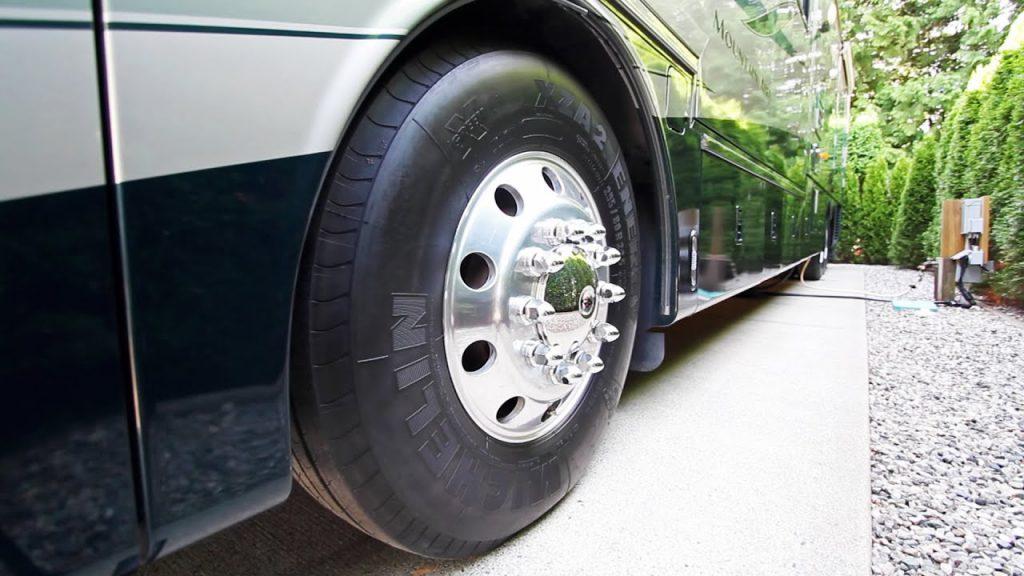 A hot tire has been used for some time throughout the day.
A hot tire has been used for some time throughout the day.
The latter describes the tire after it has been warmed up by use and the ambient temperature levels. A hot tire will show between 4 to 6 higher PSI than a cold tire will show. The rate is about 1 PSI pound per 10 degrees ambient temperature.
But the key is you cannot inflate your tires according to the hot levels. If you over or under inflate your tires you will cause some damage to the tires and make your journey a bit rougher than it should be.
No matter the conditions you are driving under, you cannot inflate your tires past the cold PSI maximum level listed on the side of the tires. If you violate that level you can overheat your tire and overheating is the leading cause of trailer tire failure.
The good news here is that the tire PSI does not change when the trailer is loaded or not. You may see a difference in the shape of the tire if you overload it but the PSI will not change just because the shape changes.
In what may be called extreme circumstances, you may see a 1 PSI change but that is not enough to damage your tires. The key is not to exceed the PSI level listed on the tire. That is the maximum amount of air you can place in your trailer tires.
The reason some people may lower the PSI in their tires is that their trailer is empty and they want to stop the bouncing that comes with properly inflated tires. Do not confuse the load range with the PSI level.
The former is for how much weight the tire can hold and the latter is telling you how much air you can put in the tire.
This is not going to change. Each tire, no matter the number of axles, will have a maximum amount of air it can hold. That maximum amount is listed on all the tires. You do not go over that PSI level even if you have 4 tires and two axles.
Of course, some people say that if you under inflate your tires when carrying a load, they will grip the road better.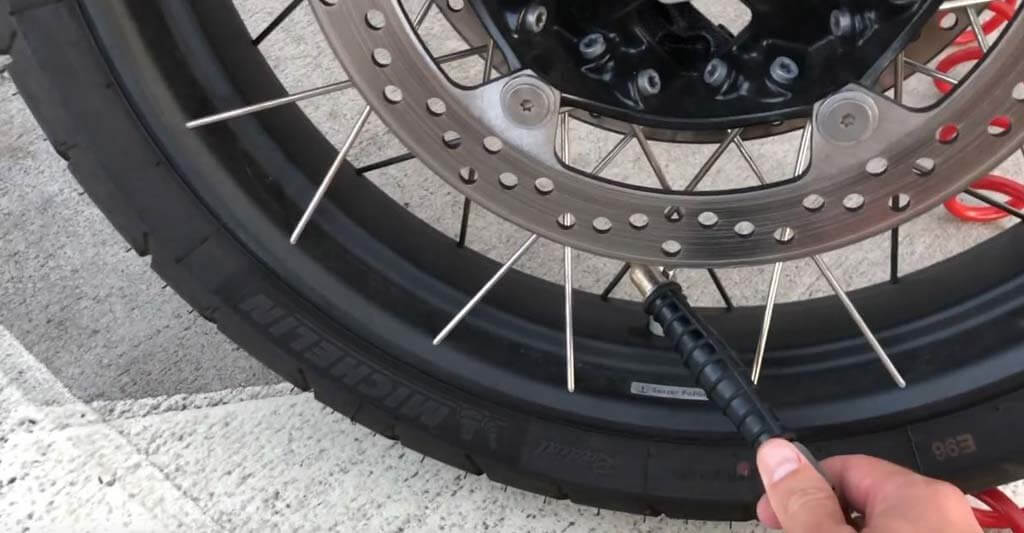 This is not the case. Under inflated tires may cause you tire trouble in different ways and make it more dangerous to drive. The same warning applies to over-inflated tires.
This is not the case. Under inflated tires may cause you tire trouble in different ways and make it more dangerous to drive. The same warning applies to over-inflated tires.
Just do not go over the PSI level listed on the tire and you should be fine. The weight held by each tire is not a factor in this issue and it is usually not known how much each tire is carrying. Stick to the PSI level on the side of the tire and you should ward off any problems even if you bounce more.
This is a simple step to take. If you take the time to check your tire pressure before you leave your home or camping spot, you can save yourself a lot of trouble. All you need to check your tire pressure is an accurate tire pressure gauge.
Take the covers off the valve and press the gauge down hard and firm onto the valve. The result spurt of air will push the needle or white gauge to the level of air pressure inside your tire. If you have a digital tire pressure gauge then you should get a clear read-out.
Then check your reading with the PSI level listed on the side of your tire. If the two do not agree, you may have to add more air or let a little bit out. However, take into account that warm tires will read higher than cold tires.
So you want to adjust for the different reading. It is best to check your tires when they are cold as the PSI level on the side of the tire is set for cold tires.
The answer is going to be the same for this type of trailer as it is for regular travel trailers. The maximum amount of air you should put in a boat trailer tire is listed on the side of the tire.
It doesn’t matter how heavy the boat is, that is the most air you can put in a boat trailer tire or any trailer tire. There is nothing scientific or special about tires no matter where they go. They can only hold so much air pressure and that is it.
Over inflate or under inflate those tires and you will face the same risks and dangers travel trailer and other trailer owners face.
This is the same answer as the previous section. Whatever is listed on the side of the tire will be the most air you can put inside the tire and have it perform up to its claims. At no time can you go over that listed PSI level even if you are hauling your crop in from the furthest field from your barn or silo.
The tires are made to hold only so much air and if you go over it, you will have some sort of trouble eventually. While tires are made to handle different loads, their PSI capacity does not change.
You have to look on the side of the tractor-trailer tires and see how much air pressure it can hold. This holds true for the semi-trailers you may be driving. The capacity does not change when the load weight changes. Read your tire to get the maximum PSI level no matter what.
The basic reason is that trailer tires have to hold more weight than a passenger tire has to hold. Sometimes, those trailers can weigh up to 15,000 pounds and they need a lot of air to hold that weight and move down the road
Sometimes, those trailers can weigh up to 15,000 pounds and they need a lot of air to hold that weight and move down the road
A passenger vehicle may only hold between 2000 and 8000 pounds, depending on if it is a small car, sedan, light truck, or SUV and carrying cargo. Also, the trailer tire is built with thicker sidewalls so they can hold more air with ease.
The lighter the trailer, the less PSI you will need in the tires. The maximum tire pressure is determined by the weight of the trailer so you may find that lighter trailer tires may not hold as much air as their heavier counterparts.
Yes, that is one of the many sources why trailers sway as you drive along the road. The tires are said to compress and decompress with each bump in the road. This reaction influences the trailer’s performance and you should start to see some sway taking place.
Low or under inflated tires give a lot more freedom of movement to the tires and that means you are losing control over your trailer. When you see your trailer swaying, take the next opportunity you can to check the tire pressure.
When you see your trailer swaying, take the next opportunity you can to check the tire pressure.
If they are inflated to the right level then you need to start looking at other sources for this problem. Those other sources would include too much weight, the weight is not distributed properly, you are experiencing wind gusts or you are driving too fast.
The maximum speed trailer tires are rated for is 65 mph and some are rated for lower speeds.
Having the right air pressure in your tires is very important. Too little or too much can result in damage to the tires, make them wear out faster, or an accident. No matter how much weight you are carrying, the PSI levels never change.
What it says is the maximum tire pressure for the tire, you cannot exceed that level no matter what. It doesn’t matter what anyone says either. Do not go above that PSI level.
Tow safely by ensuring the right trailer tire pressure for your boat.
The cost, due to accelerated wear, of improperly inflated trailer tires pales in comparison to putting the lives of other motorists, your passengers and yourself at risk. ShutterstockBoat-trailer tires require a lot of air pressure — in most cases, between 50 and 65 psi. In fact, the correct tire pressure for your boat trailer is almost always the maximum-rated pressure for that tire, which is molded right on the sidewall.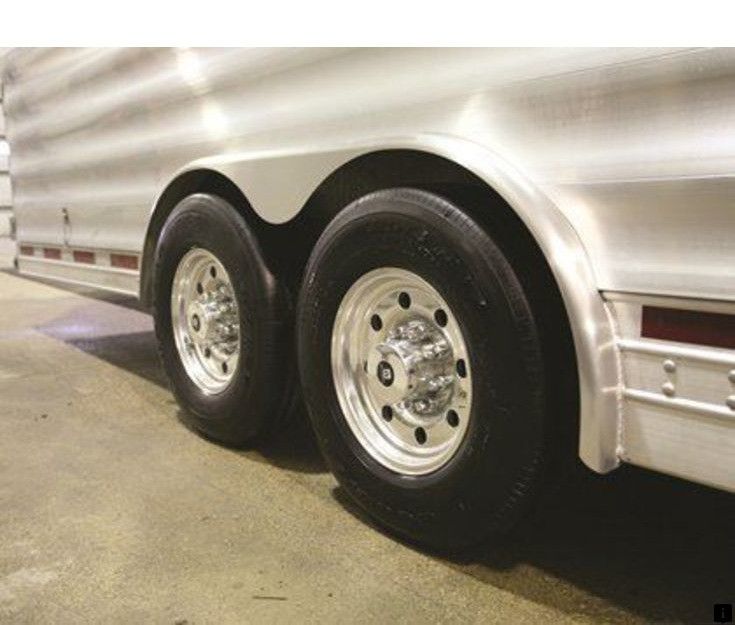 Maintaining that trailer tire PSI is critically important to towing safety.
Maintaining that trailer tire PSI is critically important to towing safety.
Tire pressure determines the load the tire can safely carry. The load capacity of the trailer was determined with that specific tire pressure as a factor. If you roll out of the driveway towing your boat with less than the max psi in the trailer tires, you have effectively reduced the load capacity of the entire trailer. Underinflated and thus overloaded tires are the leading cause of trailer-tire failure; the tires overheat and fall apart.
Here’s an example. A single-axle boat trailer with a 2,490-pound GVWR (trailer plus cargo) rolls on ST175/80R13C tires with a max trailer tire PSI of 50 pounds. At 50 psi, each tire is rated to carry 1,360 pounds, or a combined 2,720 pounds for the pair of tires. If the tire pressure is reduced to 40 psi, the individual tire-load rating drops to 1,190 pounds (2,380 pounds combined), or 110 pounds less than the trailer capacity. If you are in the habit of airing those trailer tires to just 35 pounds (your truck tires take 35 pounds, after all) the combined tire capacity drops to just 2,200 pounds.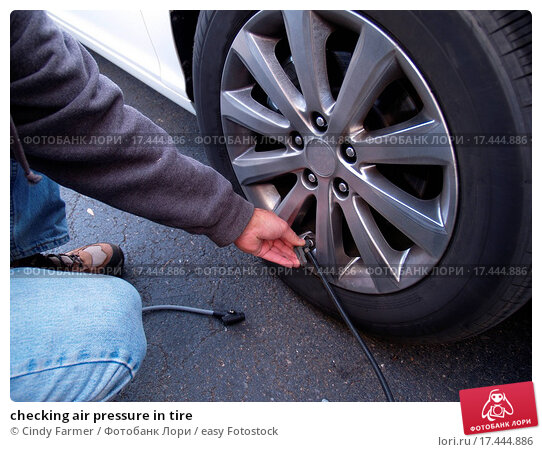 This could be a problem if the boat (including outboard, batteries, fuel and gear) plus the trailer weighs 2,400 pounds.
This could be a problem if the boat (including outboard, batteries, fuel and gear) plus the trailer weighs 2,400 pounds.
Advertisement
But wait, you wonder. If I fill my trailer tires to the max psi, won’t they be overinflated when they warm up after towing for 100 miles? What if they explode right off the rims? Air pressure will rise if the tire warms, or even as ambient air temperature changes, but only by 2 percent for each 10 degrees, and the tire is engineered to handle that extra 2 to 4 psi. If you add air to warm tires, simply reduce the pressure by 2 to 4 psi.
Quick Tip: Tire covers can help prolong the life span of tires on trailers that are usually stored outdoors by protecting them from the sun’s damaging UV rays.
An example of VIN sticker or a tire-and-load sticker that should be on your trailer. Charles PlueddemanAll new trailers have a VIN sticker or a tire-and-load sticker — often hard to find on an inside frame rail — that states the trailer-tire size, the GVWR with those tires, and the specified tire inflation psi. Before buying a used trailer, check the sticker to make sure the tires are the correct size and rating. They may have been replaced with a less-expensive tire with an inadequate rating. If you can’t find the sticker, call the trailer manufacturer for tire info.
Before buying a used trailer, check the sticker to make sure the tires are the correct size and rating. They may have been replaced with a less-expensive tire with an inadequate rating. If you can’t find the sticker, call the trailer manufacturer for tire info.
Advertisement
All new trailers have a VIN sticker or a tire-and-load sticker — often hard to find on an inside frame rail — that states the trailer-tire size, the GVWR with those tires, and the specified tire inflation psi. Before buying a used trailer, check the sticker to make sure the tires are the correct size and rating. They may have been replaced with a less-expensive tire with an inadequate rating. If you can’t find the sticker, call the trailer manufacturer for tire info.
| |
| Load weight 12 questions about trailers Fines Trailer inspection nine0035 Helpful Hints Trailer physics Magazine 4x4 transports ATV on Kurgan trailer |
A few words about the proper operation of trailers. The trailer should be loaded evenly over the entire area of the loading platform:
Watch the tow ball wear carefully. Before starting the operation of the car trailer and during its further use, it is recommended to lubricate the ball of the tow hitch of the car with Litol-24 oil. This will reduce friction and wear on the mating parts. Monitor trailer tire pressure. It should be 2.0-2.2 kgf / sq. cm. This will increase the life of the tires. nine0020 Dangerous sudden braking on a slippery road in a bend. A trailer that does not have a braking device pushes the rear axle of the car into a skid. Do not press against the curb before the right turn, as the trailer in the turn moves inward and one wheel enters the sidewalk. When starting off, act as if you had a vehicle in tow instead of a rigid hitch. We gently release the clutch pedal, as if taking out the slack in the cable - this is called the "preload" technique. Then you can accelerate more intensively. Before braking, "release the gas" and start braking after a short pause. nine0020 If you are towing an empty trailer or a lightly loaded trailer over rough countryside dirt roads, reduce tire pressure so it does not bounce around like a ball. Just don't forget about it before you load a full body of gravel.
|
TD Kurgan trailersSTANDARD 8213 01KREPYSH 8213 03 best UNIVERSAL 8213 05 UNIVERSAL 8213 A5 ATHLET 8213 B5 TAIGA II 8213 A7 big TAIGA + 8213 B7 new TANDEM 8213 2E PLAZ 8213 E7 PLATFORM 8213 WATER 8213 03, A5 VODNIK 8213 A7 WATER 8213 B5 TROPHY (for snowmobile and ATV) new
Kurganmashzavod8284 208284 21 8284 50 new 8284 40 new
IZHEVSK TRAILERS71621 nine0023 71622
SARANSKSPETSTEKHNIKASST-7132-02SST-7132-06 SST-7132-08 SST-7132-09 SST-7132-13
AvtoSAF27AB/NBAF31 AL38AB/NB AF34EB/NB HB48AA HF53AA
FINN-TRAILERIFT-35
SARANSK TRUCK PLANTSAZ-82994SAZ-82994-01 SAZ-82994-02
CAR TRAILERSVORONEZH 7135 Prestige 1.  5 Summer resident 5 Summer resident 7135 Prestige 1.7 7135 Prestige 1.8x1.3 7135 Prestige 2.0x1.3 7135 Prestige 2.0x1.4 7135 Prestige 2.2x1.3 7135 Prestige 2.2x1.4 Ufa Birsk Dyurtyuli Tuymazy Mesyagutovo village |
Category: Tire pressure
Article reading time: 3 minutes
Save to your bookmarks
The safety of all road users and the life of your tires depend on the correct answer. After all, pumped tires can burst on the go, causing an accident, and flat tires are erased around the edges in a couple of seasons. And if you have a passenger car (mini-tractor or walk-behind tractor), you should read this article and find out the control rules, as well as the permissible tire pressures for a single-axle or two-axle trailed construction.
After all, pumped tires can burst on the go, causing an accident, and flat tires are erased around the edges in a couple of seasons. And if you have a passenger car (mini-tractor or walk-behind tractor), you should read this article and find out the control rules, as well as the permissible tire pressures for a single-axle or two-axle trailed construction.
According to the generally accepted classification, a trailed structure for a passenger car (motoblock, mini-tractor) can be:
In addition, trailer structures are available as universal or special. On universal models, you can carry anything. Special options are designed for a specific type of cargo, so they can be classified as:
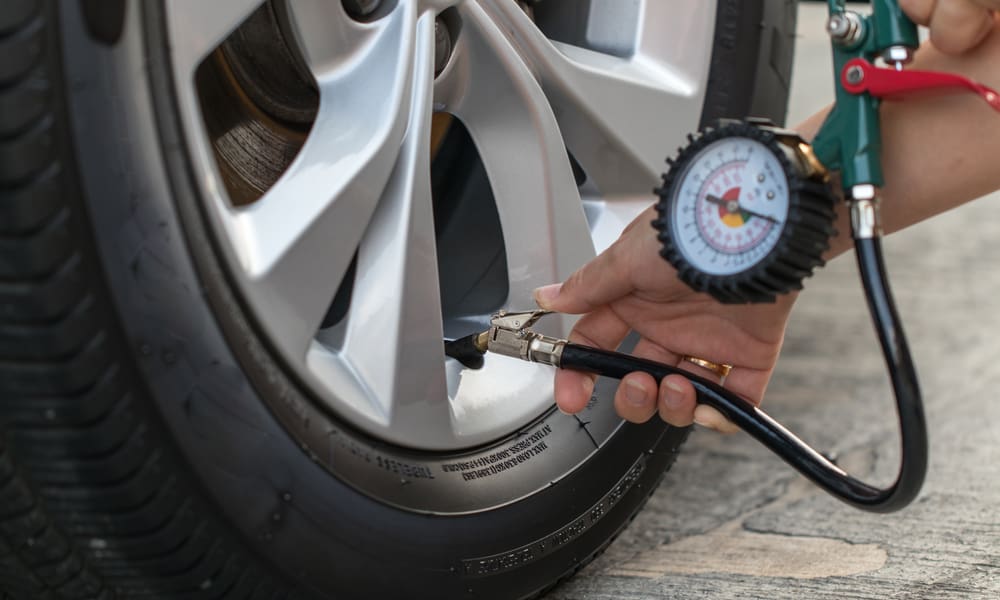
Trailer tire pressure depends on load capacity and construction format. In addition, it is affected by the ambient temperature, the type of suspension, and the design features of the drawbar.
Remember, the recommended pressure in a heavy or light trailer tire is determined only by the manufacturer. Therefore, the permissible pressure values are displayed in the technical data sheet of the trailed structure. There are two numbers in this document: the pressure in the tires for single and dual placement on the axle.
In most cases, a car wheel is inflated to 2-2.1 atmospheres. Do the same with trailer tires. However, the pressure in the wheels of a walk-behind tractor trailer can be significantly less. For example, a cargo trailer for a car or walk-behind tractor model UAZ-8109(Ishimmashzavod) allows only 1.1 atmospheres. The Skif-500 and Skif-700 models are designed for the same indicator.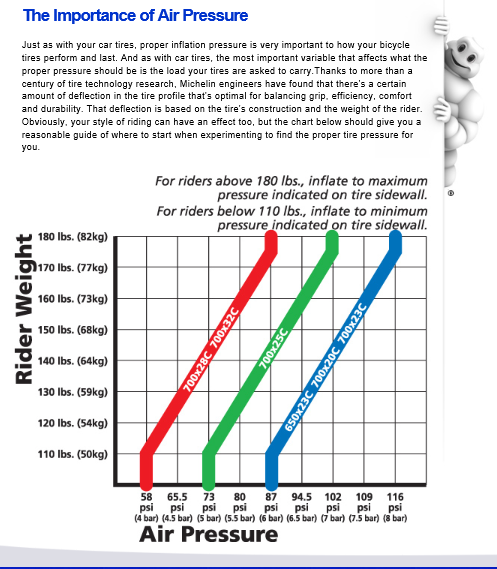
Boat trailer tire pressure does not fall below 2 atmospheres. However, the boat trailer model 81771A of the Moscow Special Vehicles Plant allows pressure up to 2.1-2.4 atmospheres.
Winter Drive protection
Tires Goodyear UltraGrip Arctic 2 SUV
Winter Drive Protection Sound Comfort
Rating:
4.5
Tires Goodyear UltraGrip Ice 2
Tires Goodyear UltraGrip Performance+ SUV
Tires Goodyear UltraGrip Arctic 2
Winter Drive Protection Run On Flat Sound Comfort
Tires Goodyear UltraGrip Performance+
Tire pressure can be checked at any service station. In addition, this can be done with a pressure gauge by connecting the device to the tire nipple. If you don’t want to check tire pressure for money or mess with a pressure gauge, buy a simple display system (caps with labels) or a full-fledged controller connected to a car computer via a wireless channel. Using these devices, you can control the amount of atmosphere in the tire at any time. nine0020
In addition, this can be done with a pressure gauge by connecting the device to the tire nipple. If you don’t want to check tire pressure for money or mess with a pressure gauge, buy a simple display system (caps with labels) or a full-fledged controller connected to a car computer via a wireless channel. Using these devices, you can control the amount of atmosphere in the tire at any time. nine0020
Why do this? First of all, to extend the life of the tread. If you overinflate a tire, the tread will wear off in the central part of the contact patch. If you carry loads on a flat tire, the tread will wear off along the edges of the contact patch. In any case, the wheel will last no more than three years (and not 4-5, as stated in the passport).
In addition, to prolong the life of the wheels, you need to think about the degree of appearance of the trailer structure and the speed of the hitch. If the operation of trailers for a walk-behind tractor does not allow a load of more than 500 kg and a speed of more than 80 km / h, do not try to carry a heavier load in the body.